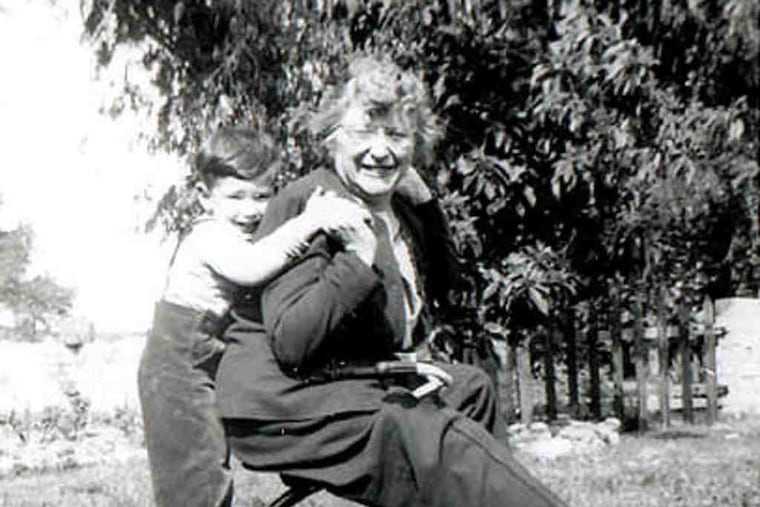Stars of the Yiddish theater shine anew
Conductor Michael Tilson Thomas presents a tribute to his grandparents, Boris and Bessie Thomashefsky.

On Philadelphia nights in the 1880s and '90s, in what we call Queen Village today, sounds of Yiddish poured from places like the Germania Theatre on Third Street, or the Wheatley on Fifth, or Market House Hall on the 700 block of Christian. Music scored overnight was part of the florid dramas and self-deprecating comedies, sometimes featuring superstars Boris or Bessie Thomashefsky, often about families trying to find a cultural footing in America.
The theaters are gone. So is Yiddish, a hybrid tongue of Hebrew and Old German that gave the Jews of Eastern Europe a common language - virtually wiped out with them in the World War II death camps.
On Tuesday and Wednesday nights at the Kimmel Center, the sounds of those days will once more be a part of Center City, the result of an intense project that began in 1998, spearheaded by another superstar who is the grandson of the Thomashefskys, luminaries of their day.
Michael Tilson Thomas - music director of the San Francisco Symphony and the artistic director who holds the keys to a new concert hall for his New World Symphony in Miami - was not yet born when his paternal grandfather, Boris, died. But Tilson Thomas, 66, grew up near his grandmother Bessie in Los Angeles and was close to her until she died when he was in his late teens. Now he is the steward of much that remains - musical scores, posters, costumes, scripts, and memorabilia - of America's Yiddish theater.
The Thomashefsky Project, which he began with the small collection he inherited, has researched, catalogued and translated materials related to his grandparents in collections across the country. From that, and his own memories, Tilson Thomas has put together The Thomashefskys: Music and Memories of a Life in the Yiddish Theater, a tribute he narrates and has performed with some of the nation's great orchestras.
After conducting the Philadelphia Orchestra in regular subscription concerts last week, he's now at the helm in The Thomashefskys, which has a small cast of singers and actors and uses supertitles to translate the Yiddish pieces once performed by his grandparents.
"I wanted to find out more about what else existed, where it was, what condition it was in, and to understand the chronology of the actual scope of what they had done," Tilson Thomas said in an interview last week. "I had heard all these stories, but they were in no order, and there was no sense of which were the most important ones. . . . When was this play done? What city? Where are we in terms of the Spanish American War, the First World War? What's going on in society, what was the immigration situation?"
The work as a whole, he has said, underscores the way Yiddish theater spoke to, and helped shape, the social transformation of a new group of Americans. It had its serious literary side - the Thomashefskys' colleague, Jacob P. Adler, was the most popular of the classical Yiddish actors, and the rivalries between him and Boris were many, and for show. But its popular side, derogatorily called shund (Yiddish for trash) was what sold tickets and grabbed hearts; it also, later, traveled uptown in New York in English, to this embryonic thing called Broadway.
"In retrospect," Tilson Thomas says, "it seems to me that at least for us here in America, the shund plays were more important. That was where the mostly radical side of the theater could show itself. They were talking about capital versus labor, and about women's rights and controversial issues." He says that days after the 1889 Johnstown flood, a Yiddish play was being performed about it, and it considered the effect on the area's Jewish population. Sheet music was written on the spot, improvisation was paramount.
To understand the Thomashefskys' role in this, consider Boris' funeral in 1939, long after Yiddish theater's golden age, when more than 30,000 people jammed the street outside the funeral home. He and Bessie were long divorced - Tilson Thomas says she never spoke ill of him, but acknowledged disappointment at his philandering - and after running a large New York theater together, each went on to run another. Bessie "had become a completely independent star and impresario and manager in her own right."
As for the material now translated and catalogued, "no one had looked at some of this for a hundred years," says Linda Steinberg, executive director of the Thomashefsky Project and now director of education at the new National Museum of American Jewish History here. "Sometimes we'd find a first-violin score at the New York Public Library, and other parts elsewhere. There'd be no annotations on the original scores, it was very bare-bones. That's where Michael Tilson Thomas' role was absolutely necessary. He knew his grandmother and they would perform these, she and her friends, in his North Hollywood home."
The Thomashefskys were married in Philadelphia, and their time here before they made it big is chronicled in Harry D. Boonin's The Jewish Quarter of Philadelphia, and in their autobiographies. Now Steinberg has a list of those plays, works like Di Shpanishe Inkvizitsye (The Spanish Inquisition), with Boris the prince, Bessie his beloved. A live horse misbehaved onstage, bashing Bessie's foot, which audiences thought was scripted, and loved.
"We performed," Bessie wrote of those early days, "and from time to time earned something to eat. There wasn't anything to eat, but we also didn't complain. It was a joyful time."